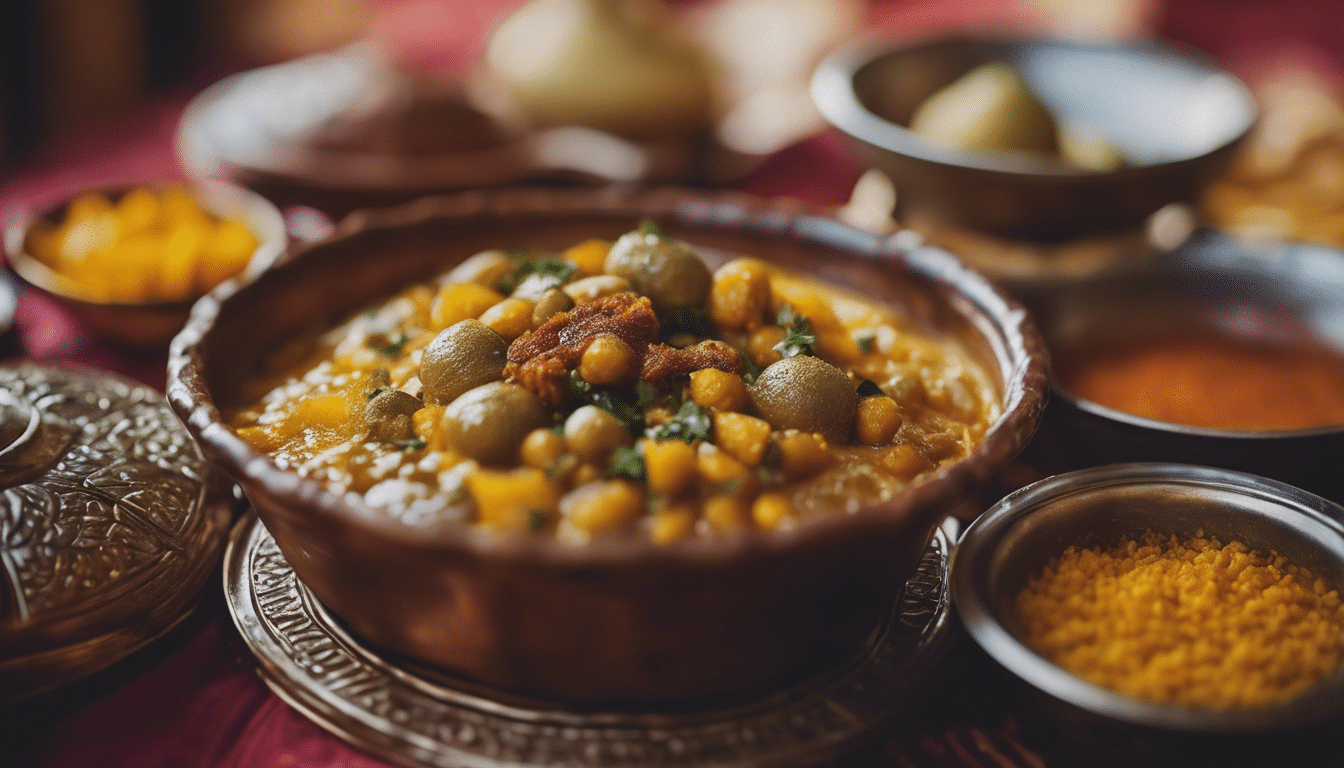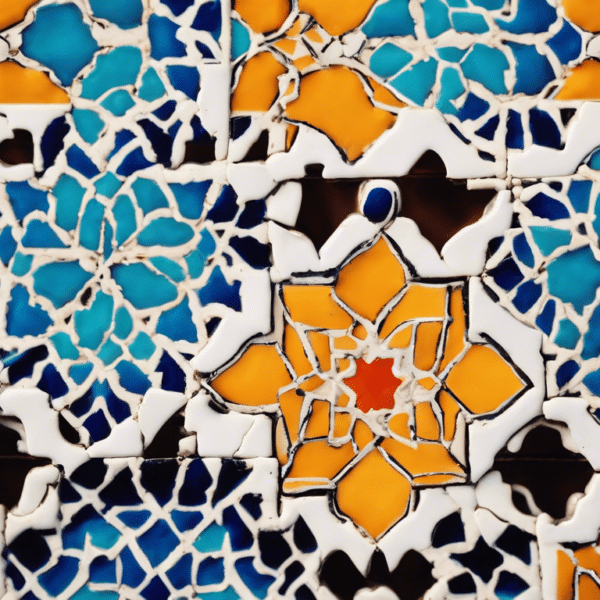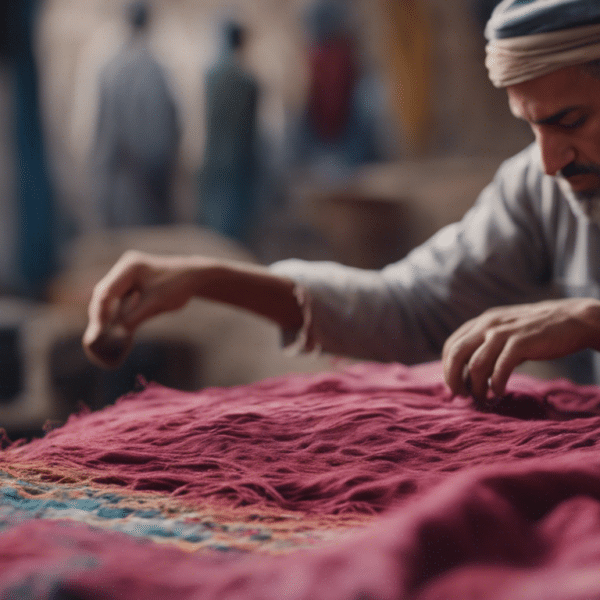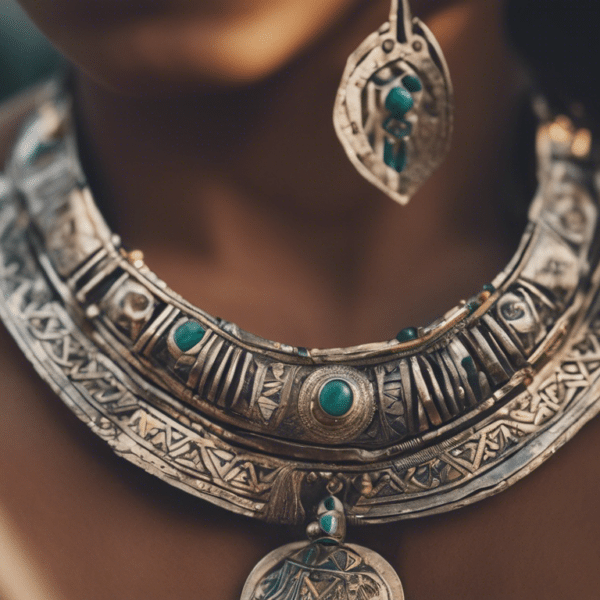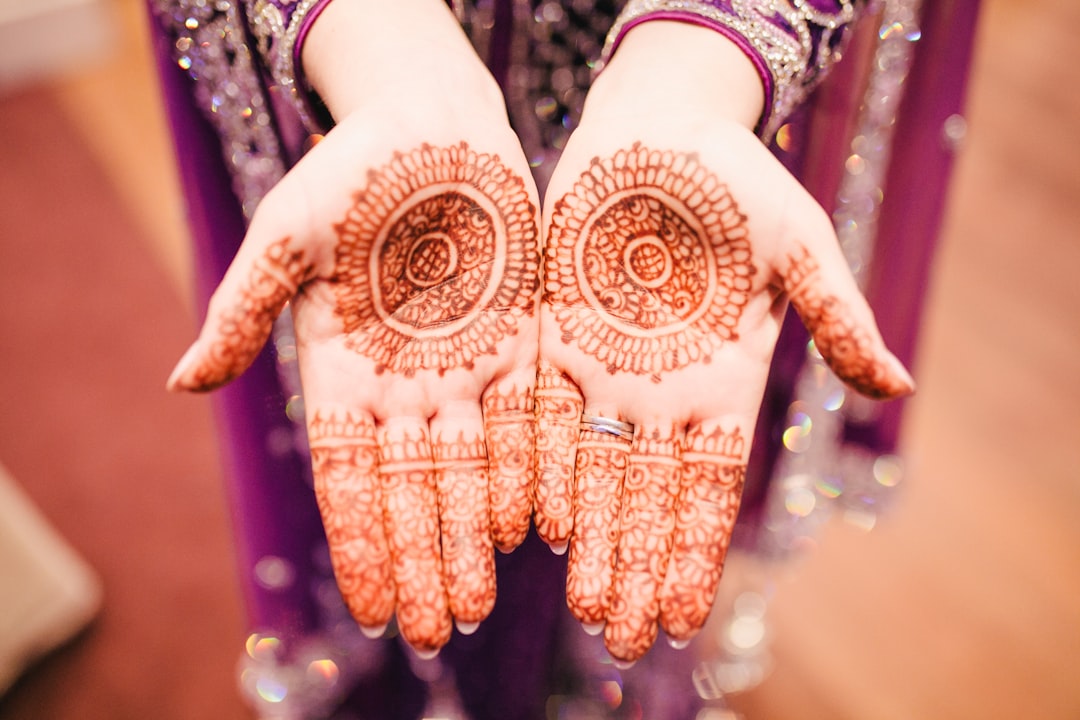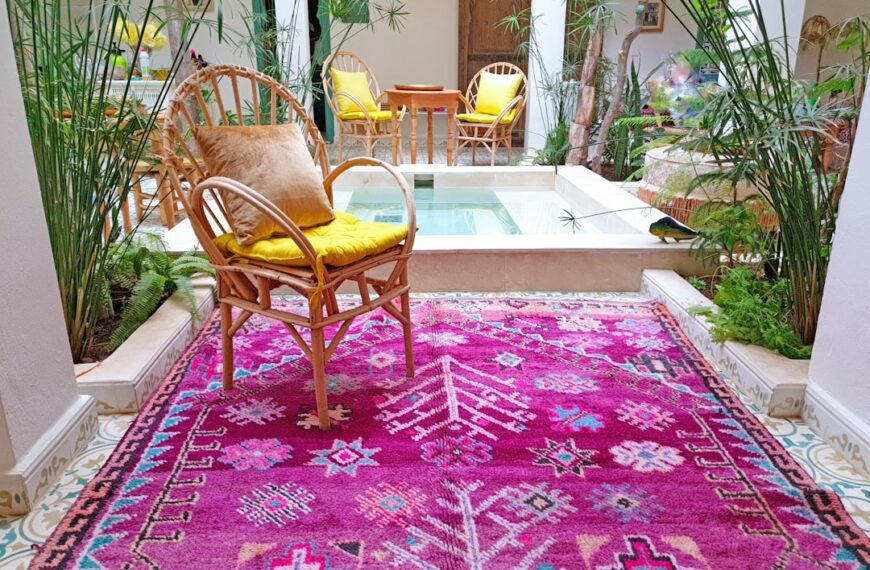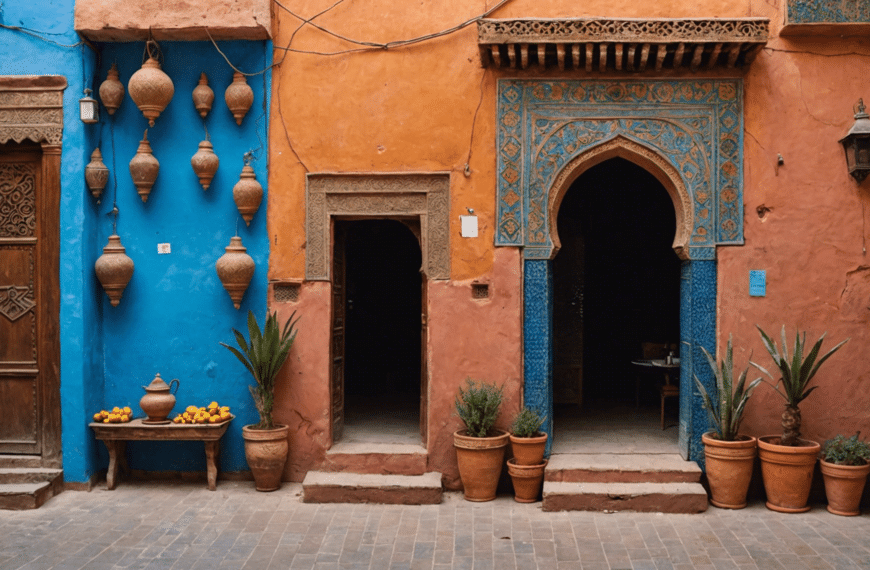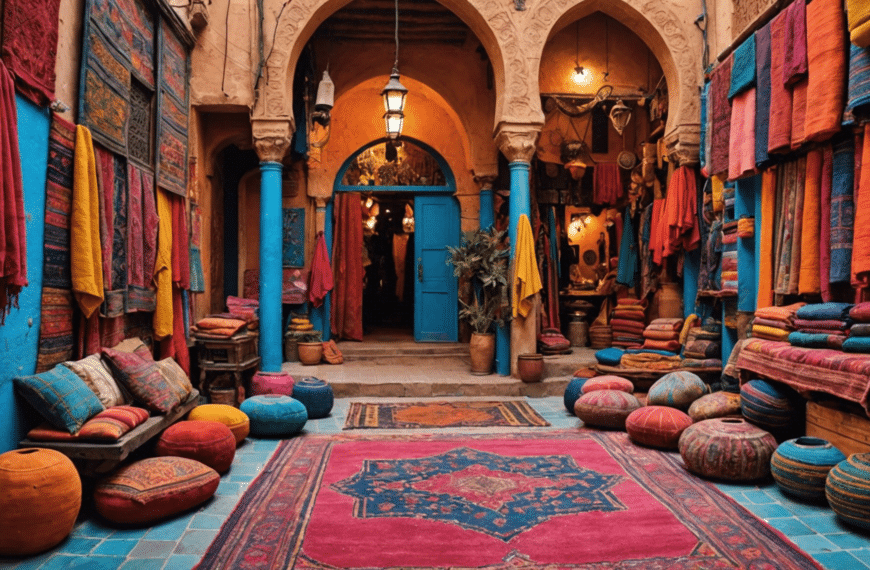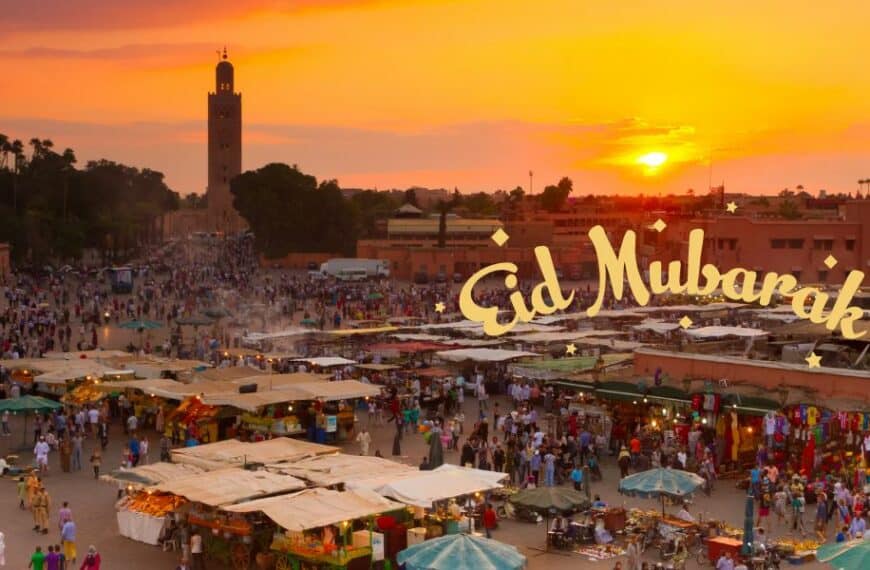The Rich Tapestry of Spices in Moroccan Cooking
Moroccan Cuisine: A Journey Through Flavors and Traditions
Embark on a sensory adventure through the labyrinthine alleyways of Moroccan markets, where the air is heavy with the scent of spices and the rich traditions of an ancient culinary art form come to life. The rich tapestry of Moroccan cuisine is a melting pot of influences, from the indigenous Berbers to Arabic, Andalusian, and Mediterranean flavors. Each dish is a story told through its ingredients, and at the heart of these narratives are the spices – the quintessential essence of Moroccan gastronomy.
The Cornerstone of Flavor: Traditional Moroccan Spices
The foundation of any Moroccan dish is its delicate blend of spices. Each recipe whispers the secrets of the Moroccan palate, harmonizing flavors that have been refined over centuries. The most prominent among these is ras el hanout, a signature mixture that can contain anywhere from ten to one hundred spices. Translating to ‘head of the shop,’ it is the pinnacle of the spice merchant’s craft, embodying the very best of their stock.
Cumin, coriander, turmeric, and cinnamon make frequent appearances, imbuing dishes with their distinct flavors and colors. But it’s beyond the common that the magic truly happens – with the heat of harissa, the subtle essence of saffron threads, and the sweet, floral notes of orange blossom water.
Spices in Action: The Quintessentials of Moroccan Dishes
Picture a tagine, the classic Moroccan earthenware pot, with its conical lid trapping the steam and flavors, slowly coaxing a stew to tender perfection. The marriage of spices in a tagine is a testament to the balance required in Moroccan cooking – where no single spice overpowers the other. The same can be said for couscous, where a mélange of seven vegetables nestles among fluffy semolina grains, each bite a different shade of spice-infused deliciousness.
One must not forget the pastries, from sweet to savory. The ever-popular briouats are as much about their spiced fillings as they are about the delicate pastry that encases them. Almonds crushed with cinnamon and enveloped in honey evoke the sweetness that is as integral to Moroccan spice culture as its heat and zest.
The Art of Blending: Crafting the Perfect Spice Mix
To master Moroccan dishes is to master the art of spice blending. Each family, each chef, has their own secret concoction, passed down and perfected through generations. Central to this is the balance – knowing how the earthiness of cumin can complement the sweetness of cinnamon, or how the sharpness of ginger can enhance the mellow warmth of turmeric. Learning the subtleties of this craft is akin to becoming fluent in the language of Moroccan flavors.
From Market to Kitchen: Selecting and Storing Spices
For the home cook aspiring to recreate the magic of Moroccan cuisine, the journey begins in the marketplace. Select whole spices over ground for their extended shelf life, and to grind them as needed to preserve their vibrancy. Store them in airtight containers, away from heat, allowing them to retain their potency until they’re called upon to perform on the culinary stage.
Conclusion: A Spice-Laden Legacy
As one savors a spoonful of a spice-laden dish, it’s hard not to feel connected to the rich tapestry of history and culture that is woven into the fabric of Moroccan cooking. With each bite, you taste the stories of caravans that once traversed the Sahara, the bustling medinas of ancient cities, and the hands of countless cooks who have contributed to this edible mosaic of flavors. Moroccan cuisine, with its symphony of spices, is truly a feast for the senses and a celebration of a vibrantly hued heritage.
Influence of Cultural Intersections on Moroccan Dishes
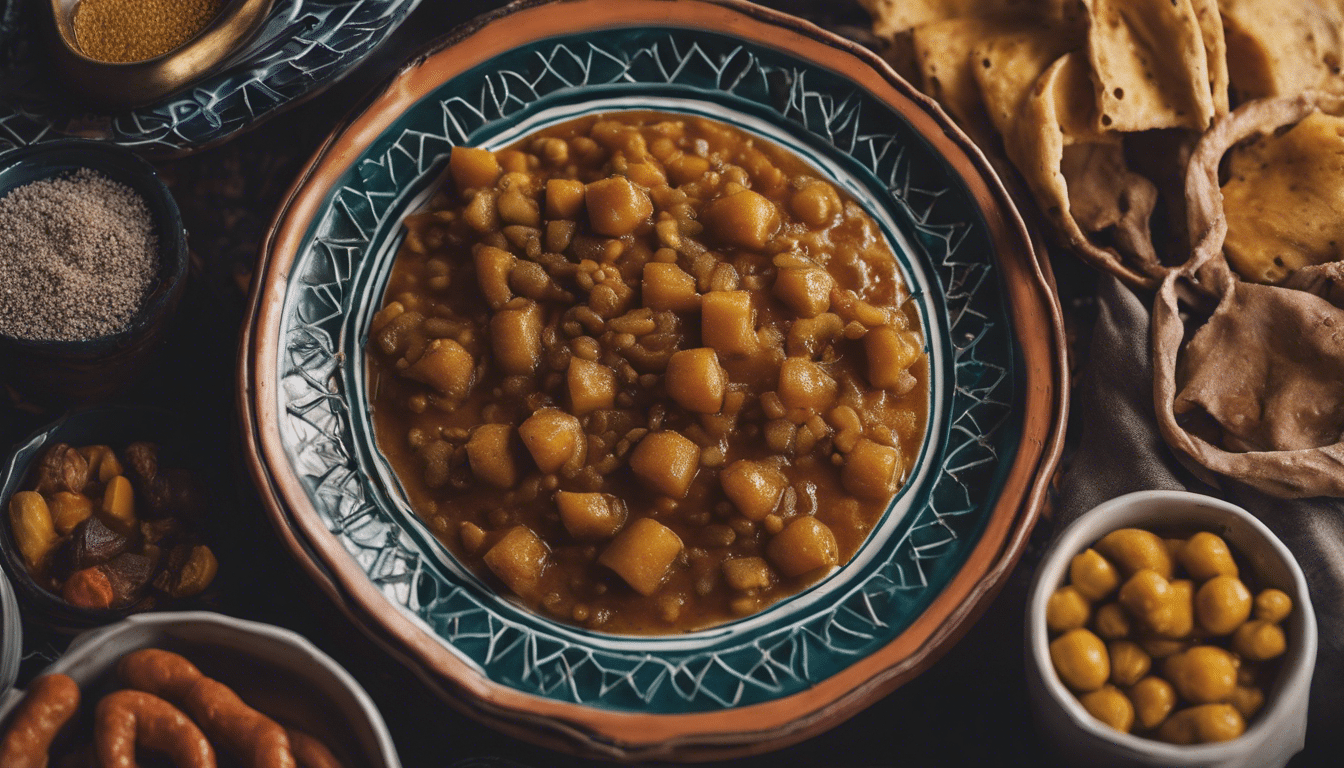
A Tapestry of Flavors: The Historical Threads of Moroccan Cuisine
In the heart of North Africa lies Morocco, a country whose cuisine reflects its complex history of cultural interchanges—a rich tapestry where every thread represents a different civilization that has passed through its cities and souks. From the native Berbers, the ancient Romans, and the Arab invasions to the influence of sub-Saharan Africa, the Ottomans, and the French and Spanish occupancy, Moroccan dishes serve as a culinary chronicle of the country’s storied past.
The Moroccan palate is a testament to its global interactions. Ingredients like olives, figs, and wheat were cultivated in Morocco since antiquity but became more central under the Romans. The Arab invasions introduced new staples such as rice, saffron, and sugar, not to mention the techniques for creating that famously flaky bread, the Khobz. On the coasts, Andalusian influences persist in the use of seafood, while the sub-Saharan caravans brought exotic spices and fruits such as cinnamon and oranges to the forefront of Moroccan flavor profiles.
Fusing Traditions: The Melting Pot of Moroccan Ingredients
Indeed, the foundation of Moroccan cuisine is a robust palette of flavors that marry the African earthiness with the aromatic spice blends like Ras el Hanout or Harissa. This complex groundwork is expressed vividly in national dishes like Couscous, where each grain embodies the convergence of diverse culinary practices. However, it’s perhaps in the slow-cooked Tagines that one can best taste the layers of history—a slow infusion of flavors where meats, fruits, nuts, and spices simmer together as comfortably as the cultures that brought them.
The sharing of meals, central to Moroccan hospitality, is also a bond that joins the country’s myriad historical influences. The communal nature of dishes like Bastilla, a savory pie combining poultry with a dusting of sugar and cinnamon, showcases the blend of savory and sweet—distinct to North Africa and yet reminiscent of medieval Spanish cuisine, known for its love of such mixtures. The interplay of salty and sweet speaks to a global palate, which over centuries, has shaped a singular Moroccan taste that is impossible to replicate anywhere else.
Celebrating Heritage Through Feasts
When one ponders the lavish Moroccan feasts that unfold during celebrations such as weddings or the holy month of Ramadan, it becomes evident that these sumptuous spreads are as much about sustenance as they are about storytelling. Mint tea, poured from a height to create a frothy crown, is more than just a drink—it’s an act that signifies respect and hospitality, attributes deeply ingrained in the Moroccan identity. The majesty of these moments lives on through culinary rituals passed down through generations.
Even with everyday dishes like Harira, a soup traditionally served to break the fast during Ramadan, the blend of lentils, chickpeas, lemon, and herbs is reflective of Morocco’s diverse agricultural heritage, while also embodying the heart of communal Moroccan life. Through such dishes, every spoonful is a connection to the past, and every bite is an exploration into a world where distinct cultures and tastes have converged to produce something uniquely Moroccan.
Preserving Techniques Across Time
As we delve into the intricacies of Moroccan dishes, it becomes clear that the preparation is as important as the ingredients themselves. The use of clay or ceramic tagines for slow cooking is a technique that harkens back to the earliest Berber traditions, which are still embraced in modern Moroccan kitchens. Similarly, the artful process of preserving lemons, a staple in many recipes, echoes a culinary tradition that spans centuries and continents. Through these time-honored methods, Moroccan cuisine not only retains the flavors of its varied historical roots but also preserves the stories and traditions behind them.
The art of fermentation and pickling, methods that extend the life of Morocco’s bountiful harvests, showcases an age-old wisdom of conserving food, enabling flavors to mature and mellow over time. These preserved foods bring a depth of flavor to Moroccan cooking that is impossible to rush, signifying a respect for the past and a sustainable approach to the future.
As we taste our way through the winding alleys of Marrakech or the coastal gems like Essaouira, exploring Moroccan cuisine is akin to embarking on an archaeological dig, where each dish uncovered is a relic of bygone eras, lovingly tended through the ages, and presented for the modern palate to savor. This culinary journey is more than just an indulgence in flavor. It’s an exploration into the heart of Morocco itself, where every meal is a harmonious symphony of the country’s long and vibrant history.
Thus, we come to understand that Moroccan cuisine, in its essence, is a living museum—a delectable exhibition where the influence of cultural intersections is not just observed but tasted, celebrated, and deeply treasured.
The Ceremonial Preparation and Presentation of Meals
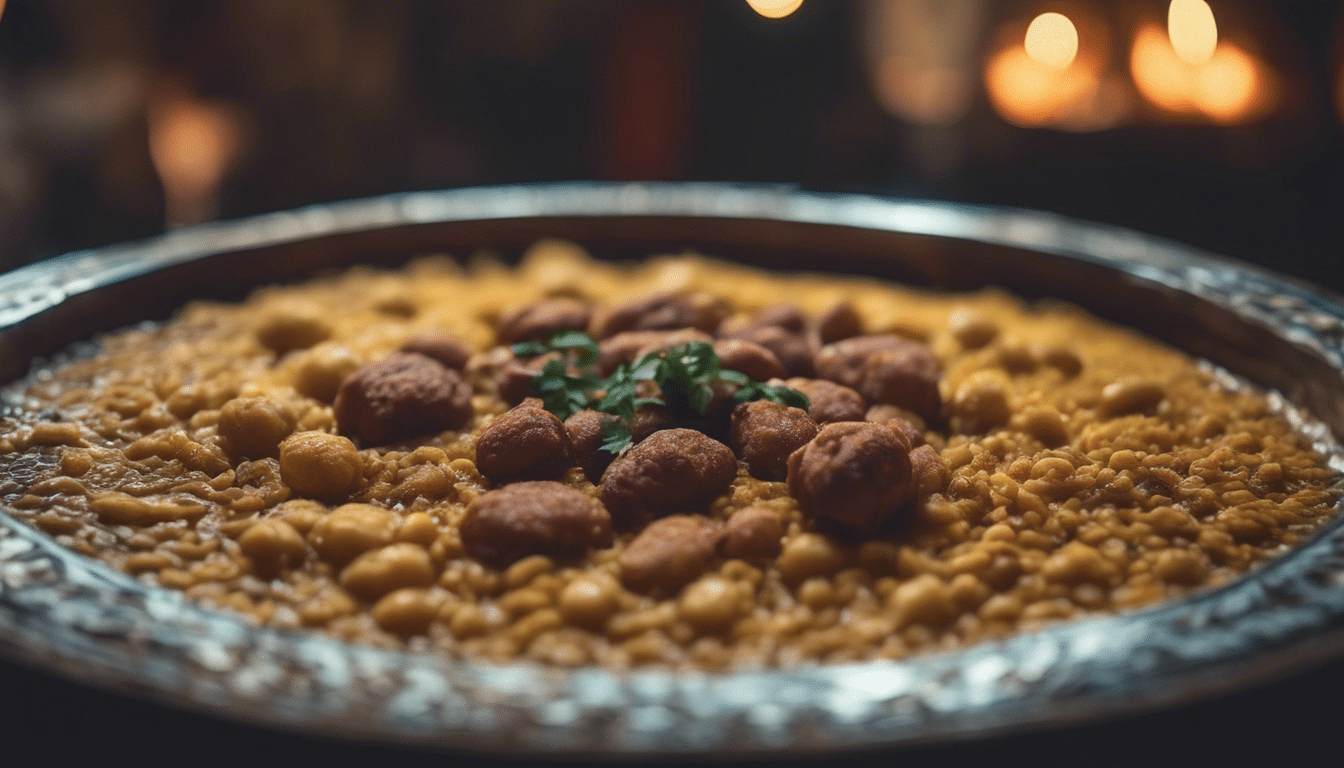
The Essence of Moroccan Cuisine: A Tapestry of Flavors and Rituals
Once you step into the realm of Moroccan Cuisine, you are not just indulging in food, but partaking in an elaborate ritual that delights the senses and honors tradition. The kitchen transforms into a sacred place, where every ingredient is treated with respect, and every step of the meal preparation is carried out with almost ceremonial precision. Let us embark on a culinary journey, where fragrances and flavors are interwoven with culture and artistry.
The Art of Spice Selection: A Palette for the Culinary Canvas
In Morocco, the choice of spices is as crucial as the selection of words for a poet. Spices are not merely seasoning; they are the essence that breathes life into dishes. Saffron’s golden threads imbue dishes with a luxurious warmth, while cumin provides a smoky whisper of the exotic. Ras el hanout—a masterful blend of many spices—brings a symphony of flavors that is distinct yet harmonious. The artful combination of these spices is key to creating the distinctly rich and layered flavors that Moroccan cuisine is famous for.
The Ritual of Cooking Tagines: A Symphony of Simmering Surprises
The Moroccan tagine, both the earthenware pot and the dish itself, is at the heart of these culinary ceremonies. The slow cooking process is a testament to the Moroccan value of patience and the belief that good things come to those who wait. The conical shape of the tagine’s lid is designed not only for an attractive presentation but also to circulate the steam and infuse the food with spices and flavor.
Bread Making: The Backbone of Every Meal
No Moroccan meal is complete without the presence of freshly baked bread. Bread holds such a sacred place that it is often used as a utensil, with diners using pieces to scoop up mouthfuls of delicious tagines and salads. The act of making bread is a daily ritual, with the dough being kneaded by hand, a symbol of the nurturing heart of the Moroccan home.
Culinary Choreography: The Art of Serving Moroccan Feasts
Serving a Moroccan meal is an art form in itself. It begins with the washing of hands, as guests gather around the dining area. The placement of dishes is strategic; larger plates at the center surrounded by smaller assortments of salads and bread. Mint tea is poured with grace, from a height to form froth, signifying hospitality. The crowning glory, often a tagine, is unveiled at the table to a chorus of aromatic steam, inviting the guests to a shared sensory experience.
Moroccan Meals as Social Glue: Bringing People Together
Moroccan meals are not just about sustenance; they are social catalysts. The act of sharing a meal transcends generations, bringing together family and friends, reinforcing bonds and creating memories. Each bite is a moment to be savored and each meal a chapter in the story of Moroccan hospitality and warmth.
The Sweet Conclusion: Desserts and Pastries in Moroccan Traditions
As meals draw to a close, the air is perfumed with the scent of orange blossom and rosewater. Desserts such as the filo-wrapped bastilla with its blend of sweet and savory, or the honey-coated chebakia cookies, are not just treats but the grand finale to the Moroccan meal. It is a sweet embrace that lingers on your palate, a fond farewell that beseeches you to return soon.
Through this modest exploration of Moroccan cuisine and its ceremonial traditions, one can glean the reverence of its culture. Every ingredient, every spice, and every gesture in the kitchen is maestro, conducting an orchestra of senses that captures both the complexity and the simplicity of Morocco’s culinary heritage.

